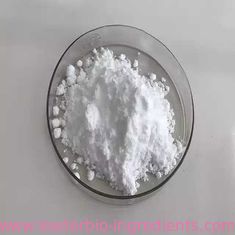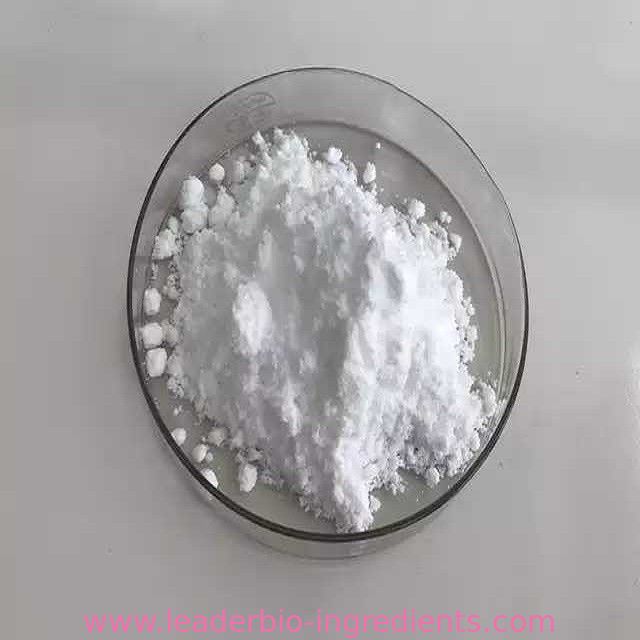| Plant extracts |
In 1951, German scientist Cunningham had purified a crystal from the Cordyceps militaris and named it cordycepin. From then on, the crordycepin reported in published literature abroad regarding to its antitumor, antiviral efficacy as well as extraction and purification had been all obtained from Cordyceps instead of being from Cordyceps sinensis which contains only trace amount of Cordycepin.
Cordyceps is the major active ingredient contained in Cordyceps (especially nucleoside). It belongs to a kind of nucleoside drugs, purine alkaloids and is also the first kind of nuclear glycosides antibiotics isolated from fungus. Owing to its special efficacy in repairing cells and protection of the genetic code of life, it has become one of the leaders in modern biomedicine. Cordycepin is a drug of natural source with various kinds of pharmacological effects such as anti-tumor, antibacterial and antiviral, immunomodulatory as well as free radical-scavenging, etc., and has good prospects for clinical application. At present time, the research on cordycepin present study is becoming an extremely active area in the field of pharmaceutical chemistry.
As a structural analogue of adenosine, cordycepin can inhibit Bacillus subtilis, Mycobacterium tuberculosis of birds and Ehrlich ascites tumor cells with inhibitory effect on the RNA and DNA synthesis inhibition of cancer cells, therefore having very strong inhibitory effect on the human nose and pharynx cancer (KD) cells. The clinically applied cordycepin is mostly used for adjuvant treatment of malignant tumors with the cases of improved clinical symptoms accounting for more than 91.7%; it is mainly used for the treatment of patients of nasal cancer, throat cancer, lung cancer, leukemia, brain cancer and other malignant tumor.
Cordycepin is extracted from the Cordyceps and is the mostly nutritious active substance inside Cordyceps. Its major composition is Cordyceps polysaccharide, Cordyceps acid as well as Cordyceps SOD and is a kind of natural nutrients of high health function. It can activate dormant cells, repair diseased cells, propagate the new living cells, clean up dead cells and is of great value in improving immunity, anti-fatigue as well as improving the body's energy. |
| Pharmacological effects |
Most currently known Cordyceps fungus contains Cordycepin, which obviously plays an important role in the anti-tumor effect. Jagger believes the cordycepin contained in Cordyceps fungus can inhibit tumorigenesis through three possible mechanisms:
1. The free alcoholic group contained in cordycepin can be incorporated into the DNA of cancer cells and takes effect.
2. Cordycepin can inhibit the phosphorylation of nucleoside or nucleotide to generate the derivatives of diphosphate and triphosphate, thereby inhibiting the synthesis of nucleic acids in tumor cell.
3. Cordycepin can block the amination of xanthylic acid into guanylate.
In 1977, Müller et al found that cordycepin had strong inhibitory effect against the proliferation of L5718Y cell with the ED50 being 0.27μg; this inhibitory effect can be eliminated by adenosine but not 2'-deoxy-nucleosides; The tritium marked Cordyceps trial have showed that cordycepin can be incorporated into RNA rather than DNA. The cordycepin, inside the cell, can be phosphorylated to 3'-ATP; 3'-ATP has no effect on the activity of the DNA-dependent DNA polymerase α and β in L5718Y cells, but has strong inhibitory effect on the nuclear Poly (a) polysaccharide which will inevitably lead to a maturation defect of mRNA, further negatively affecting the formation of mRNA and protein synthesis. The anti-tumor effects of Cordyceps may be related to this mechanism. In 1997, the United States has applied cordycepin to third-period clinical trials for the treatment of pre-B and pre-T acute lymphocytic leukemia, while cordycepin also exhibit strong anti-fungal, anti-HIV viral and selective inhibition activity on the activity of Clostridium genus.
In 1985, with in vitro experiments, Jiang ping et al observed the cytotoxicity of Cordyceps sinensis and cultured mycelium (Qinghai) on ECA cells. For the treatment of in vitro cell culture ECA, the result showed that when they two were at the lowest effective concentration 0.405mg/ml and 25mg/ml, the total infection rate was 100%, 80%, respectively, indicating that the drug has different strengths of ECA cytotoxicity. Comprehensive in vivo tests speculated that the anti-tumor effect is correlated with the certain amount of 3'-deoxy-nucleosides contained in the drug and Cordyceps polysaccharides as well as the relative balance between the overall immune regulatory function of the drugs and its effect of maintaining body immunity. Cordyceps sinensis has certain cytotoxic effect, which is consistent with the report regarding to the strong cytotoxicity of cordycepin-resistant L1210.
The above information is edited by the chemicalbook of Dai Xiongfeng. |
| Uses |
Cordycepin is known to have various kinds of effects of improving immune skill, anti-aging, anti-fatigue, anti-cancer, anti-bacterial, anti-virus, lowering blood glucose and lipid and male hormone. |
| Chemical Properties |
Crystalline Solid |
| Uses |
First reported nucleoside antibiotic. |
| Biological Activity |
Nucleoside analog that acts as an anticancer and antifungal agent. Can be converted to 3'-deoxyadenosine triphosphate (3'-dATP), which inhi |

